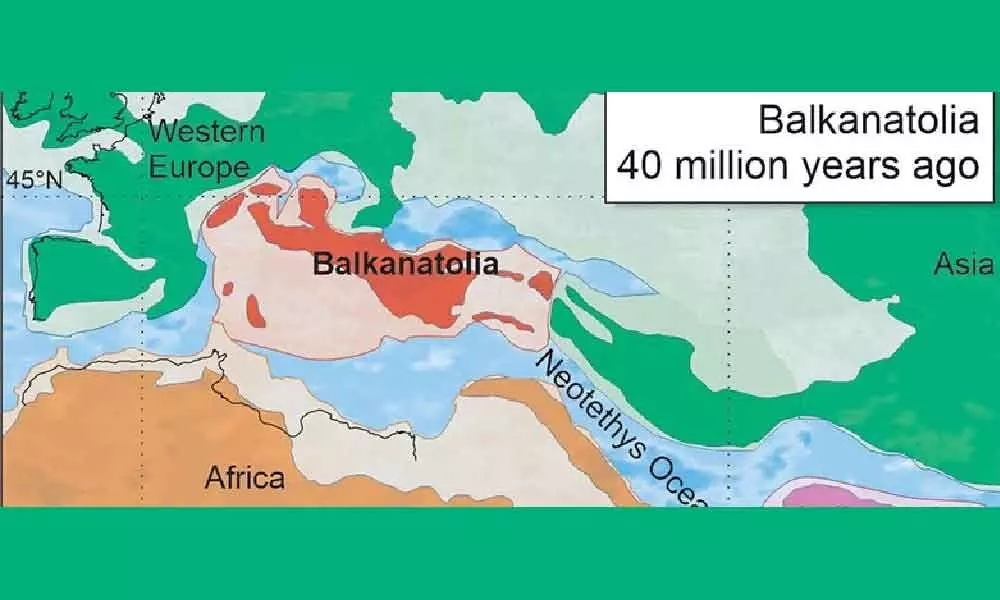A 40-Million-Year-Old Continent Have Been Rediscovered

A 40-Million-Year-Old Continent Have Been Rediscovered
- A low-lying continent that existed 40 million years before and was residence to exotic species laid the way for Asian mammals to enter southern Europe.
- Palaeogeologist Alexis Licht and colleagues explained that when and how the first surge of Asian mammals made it to south-eastern Europe remains unexplained.
According to recent research, a low-lying continent that existed 40 million years before and was residence to exotic species laid the way for Asian mammals to enter southern Europe.
This forgotten continent called "Balkanatolia" by experts was wedged between Europe, Africa, and Asia when sea levels plummeted and a land bridge created some 34 million years ago, creating a gateway between Asia and Europe.
In their new research, palaeogeologist Alexis Licht and colleagues explained that when and how the first surge of Asian mammals made it to south-eastern Europe remains unexplained. The end result, though, was nothing short of spectacular. Huge numbers of native mammals vanished from Western Europe around 34 million years ago, near the end of the Eocene period, while new Asian animals developed, in what is now known as the Grande Coupure.
Recent fossil discoveries in the Balkans, on the other hand, have thrown that timeframe off, pointing to a'special' bioregion that may have allowed Asian mammals to overrun southeastern Europe as early as 5 to 10 million years ago the Grande Coupure.
To find out, Licht and colleagues from the French National Centre for Scientific Research re-examined data from all identified fossil sites in the region, which includes the modern-day Balkan peninsula and Anatolia, Asia's westernmost extension.
The scientists rebuilt paleogeographic changes that occurred in the region, which has a complicated record of episodic drowning and re-emergence relying on present geological data, and the chronology of these sites was amended based on current geological data.
The discoveries suggests that Balkanatolia delivered as a stepping stone for animals migrating from Asia to western Europe, with the ancient landmass' transformation from standalone continent to land bridge and subsequent invasion with Asian mammals occurring at the same time as some dramatic paleogeographic changes.
Balkanatolia was an isolated archipelago, apart from the adjacent continents, around 50 million years ago, where a unique assortment of species distinct from those of Europe and eastern Asia lived, according to the study.
During 40 and 34 million years ago, a combination of dropping sea levels, expanding Antarctic ice sheets, and geological movements joined the Balkanatolia landmass to Western Europe.
According to the fossil record, this permitted Asian mammals such as rodents and four-legged hoofed mammals (also known as ungulates) to move westward and invade Balkanatolia.
Licht and colleagues also uncovered parts of a rhinoceros-like animal's jawbone at an unique fossil site in Turkey, which they estimated to roughly 38 to 35 million years ago.
The specimen, which predates the Grande Coupure by at least 1.5 million years, is arguably the oldest Asian-like ungulate yet unearthed in Anatolia, implying that Asian mammals were well on their way to Europe via Balkanatolia.
Meanwhile, they noted in their study that past interaction between individual Balkanatolian islands and the existence of this southern dissemination route remain debated, and that the storey so far "is only built on mammalian fossils, and a more comprehensive view of past Balkanatolian biodiversity persists to be derived.
Furthermore, many of the geological shifts that led to the formation of Balkanatolia are still unknown, and it's crucial to remember that this study is based on the interpretation of one team's fossil record.
















